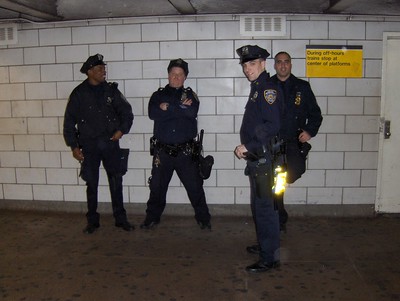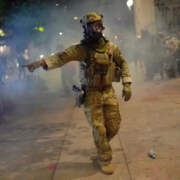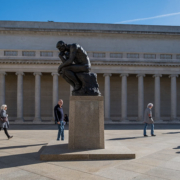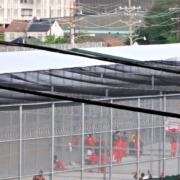“Hang up and Police?”
Over the past few years police officers, largely transit, in many metro and subway stations are frequently seen seemingly engrossed in checking their smartphones and not intervening while patrons freely evade paying fares by jumping turnstiles.
Although we could examine why users don’t pay their way on to public transportation systems, I think it’s more helpful to look at the police side of the equation.
While it’s possible that the officers could be doing law enforcement related work on their phones, the recurrent nature of this behavior, and other contextual factors, raises doubts.
Challenges Faced by Police
Indeed, there are rationale reasons why officers in these situations are on their phones and/or fail or are reluctant to intervene. To begin with, standing around all day, watching people go through turnstiles and answering mundane questions when approached by members of the public can be excruciatingly boring and checking one’s phone can break the monotony.
More germane however, is that since the 1970s the efficacy of police patrol to achieve “common sense” goals (e.g., capture criminals, deter crime, and reduce citizen fear and create feelings of safety) has been called into question. Also, the so-called Ferguson Effect, and calls to defund the police, have made law enforcement a more embattled profession. Moreover, numerous heavily criticized cases of police arresting (and injuring) young, disproportionately African-American, persons who have failed to pay fares have garnered considerable negative public attention.
Impact on Public Perception
But what are law abiding citizens to make of police hanging around Metro/subway stations, checking their phones, and not intervening? Although some users may feel better having officers physically present in subway stations, regardless of them checking their phones, (or huddling together, talking with each other), the most logical assumption is that police don’t care. More importantly, is just a bad use of public safety resources and can contribute to the negative perceptions of police.
And assuming that their supervisors are unaware of this type of police behavior would be naïve to say the least.
A Call for Change
Instead of having officers passively monitor metro/subway stations, a more proactive approach is needed. I’m not suggesting that law enforcement agencies need to crack down on fare evaders, nor we should enter into a situation of overpolicing, like we witnessed in jurisdictions like New York City, with the decade plus (2002-2013) long disastrous experience with “Stop and Frisk.”
Police departments, on the other hand, need to collaborate with city authorities and transit system, to thoroughly explore innovative, creative, and nonconfrontational solutions to address fare evasion. And if this is being done already, then the police and the news media need to draw attention to this collaboration.
In addition to shifting tax expenditures to making all (or limited portions of a jurisdiction’s) public transportation free or during certain days and hours, transit systems might consider installing alternative turnstile designs to deter or prevent evasion.
Police departments should also actively dialogue with affected communities, and seek input on appropriate strategies. Implementing community policing initiatives, where officers build trust through positive interactions, might also help to reshape perceptions and encourage public cooperation.
Specific recommendations are essential. Doing nothing or accepting business as usual in the case of policing and public safety, regardless of how minor the crime, isn’t helpful for the public, nor the police.
Photo Credit
Photographer: Joe Shlabotnik
Title: Policemen At West 4th Station
They weren’t in costume. They were actual policemen.


 https://rosarubicondior.blogspot.com/2021/02/trumps-legacy-how-trump-made-america.html
https://rosarubicondior.blogspot.com/2021/02/trumps-legacy-how-trump-made-america.html








